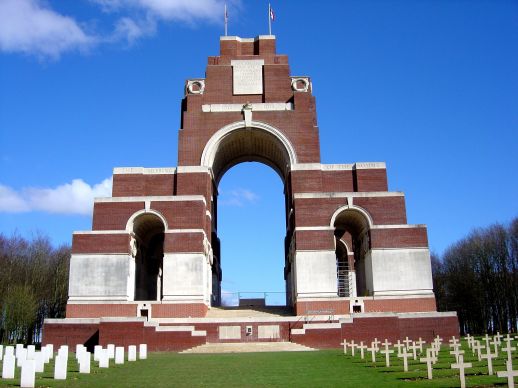Fred Smales
Date of birth: 1895
Date of death: 07.07.1916
Area: Outwood, Wakefield
Regiment: King’s Own Yorkshire Light Infantry
Family information: Son of Alfred and Jane Ann Smales
Rank: Private
Service number: 3202
War Service
Fred Smales enlisted in the army on 8th November 1914 at Ledger Lane School, during the recruiting campaign, joining the King’s Own Yorkshire Light Infantry.
On the 15th August 1915, after a period of training in the United Kingdom, he was posted to the British Expeditionary Force in France. Private Fred Smales joined the 1/4th KOYLI, when the battalion was deployed south of Boesinghe, within the Ypres Salient, part of 148th Infantry Brigade, 49th (West Riding) Division.
Throughout the summer the men of the 49th Division were engaged in constructing and repairing trenches and strong points, which were constantly shelled by the enemy artillery. After heavy rain the trenches filled with water and the ground became a quagmire. As winter approached and the weather turned colder, standing for long periods in water resulted in trench foot becoming a problem.
At 04.50 hrs on 19th December, when 1/4th KOYLI was in the front line, the enemy bombarded their positions with gas shells. The men deployed in the front line were immediately alert to the danger and successfully stopped the incursions by the enemy patrols. However many in the support trenches were sleeping and slow to fit their helmets. At 06.15 hrs, when the 1/4th Battalion was being relieved, the enemy launched another gas attack, followed by an intense artillery bombardment.
During the spring of 1916 the 1/4th KOYLI was used by the 112th Railway Construction Company near Acheux. This was followed by training near Villers-Bocage for the forthcoming battle. On the 1st July 1916, the opening day of the battle of the Somme, the 49th (West Riding) Division was in reserve. However the 1/4th and 1/5th KOYLI battalions were placed at the disposal of the 96th Infantry Brigade. On the evening of 2nd July the two battalions relieved units in the Thiepval sub-sector, taking over trenches captured the previous day. At dawn, on 3rd July, the 1/4th KOYLI positions were bombarded for two hours, the enemy using high explosive and shrapnel shells. On the 5th July companies from the 1/4th KOYLI were in support of an unsuccessful attack by the 1/5th KOYLI, when that battalion attempted to extend their positions in the “A” Line trenches.
On the 6th July the 1/4th KOYLI relieved the 1/5th KOYLI in the “A” Line trenches. At 02.00 hrs, on the 7th July, the enemy opened an intense bombardment along the original British front line, including the 1/4th KOYLI positions in the “A” Line, resulting in numerous casualties. At 02.50 hrs enemy bombers attacked and there was heavy fighting with bombs until 06.30 hrs, at which time the forward companies, with no bombs left, were forced to retire to the original British front line. At 09.30 hrs the battalion was ordered to move back to their assembly trenches in Thiepval Wood. Later, during the evening, the 1/4th KOYLI moved back to Martinsart, for rest, before moving on to Hedauville.
Between the 4th to the 8th July 1916 the 1/4th KOYLI casualties included 48 men killed or died from wounds. One of these casualties was Private Fred Smales, who was killed in action on 7th July 1916. His body was never identified and his name is inscribed on the Thiepval Memorial, which bears the names of over 72,000 men who died on the Somme sector and who have no known grave.
Family Life
Fred Smales was born on 9th February 1895, the sixth child of Alfred Smales and his wife, Jane Ann, nee Morton. He was baptised on 10th April 1895 at St Mary Magdalene Church, Outwood. At this time the family was living at Grandstand Road, Outwood and his father was employed as a coal miner. On the 19th May 1908, when Fred was thirteen years old, his father died and was buried at Outwood. Shortly afterwards Fred Smales found work at Lofthouse Colliery, where he was employed initially as a pony driver and then a hewer.
 Thiepval Memorial
Thiepval Memorial

